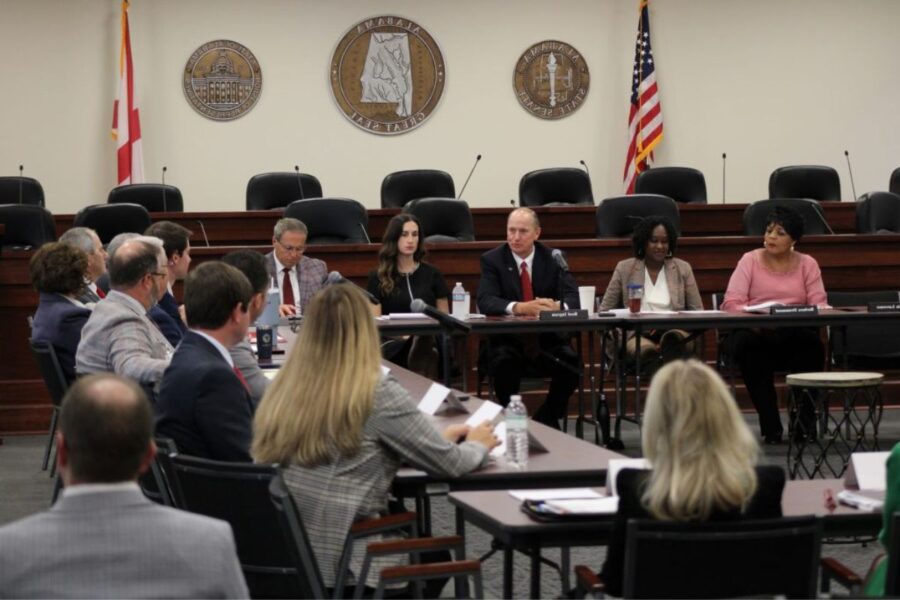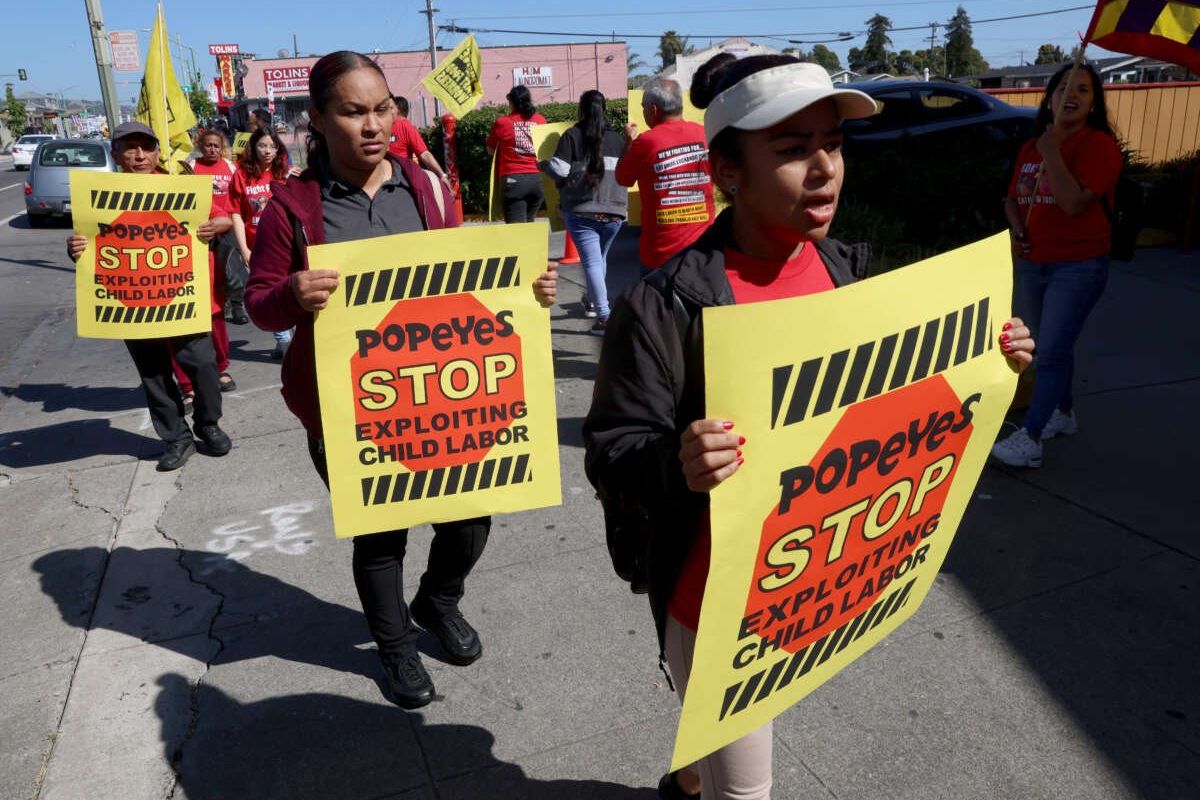Labor to Address Alabama Labor Shortage: The issue of labor shortage in Alabama has caught the attention of a GOP group, the Alabama Policy Institute (API), who recently proposed a controversial blueprint to address this concern.
According to API, the alleged labor shortage can be resolved by reviving child labor and reducing regulatory measures.
While this proposal has sparked a heated debate, with critics pointing out wage issues and the potential lack of regulation, it also raises ethical concerns and opposition from those advocating for stronger worker protections.
In order to fully understand the implications of this proposal, it is essential to the trends surrounding child labor, systemic issues, and the ongoing advocacy efforts.
Key Takeaways
- API’s ‘BluePrint for Alabama‘ proposes reviving child labor for 14- and 15-year-olds as a solution to the labor shortage in Alabama.
- Critics argue that reviving child labor is a step backward in labor rights and protections, raising concerns about potential exploitation and harm to young workers.
- API claims there is a labor shortage in Alabama and advocates for removing barriers for minor work authorization, arguing that reducing regulations will lower labor costs and benefit sectors like retail and restaurants.
- The debate surrounding the proposal highlights broader issues of labor rights, fair wages, and regulation in Alabama and the U.S., including the lack of a state wage floor and the federal minimum wage failing to meet the cost of living.
Alabama Policy Institute’s Controversial Blueprint: Child Labor Revival Proposed
The Alabama Policy Institute’s recently released ‘BluePrint for Alabama’ includes a controversial proposal to revive child labor, targeting 14- and 15-year-olds, as a means to address the perceived labor shortage in the state. The right-wing think tank argues that this move would provide young individuals with valuable work experience and fill the gaps in the labor market.
However, critics argue that reviving child labor is a step backward in terms of labor rights and protections for young workers. They express concerns about the potential exploitation and harm that could be inflicted upon these young individuals, who should instead be focusing on their education and development.
It remains to be seen how this proposal will be received by policymakers and the public, but it has certainly sparked a contentious debate.
API’s Justification: Alleged Labor Shortage and Regulatory Reduction
API argues that there is an alleged labor shortage in Alabama and advocates for regulatory reduction as a solution. They propose removing barriers for minor work authorization, aligning with a broader trend on the U.S. right to slash regulations and lower labor costs. This proposal, although shocking, reflects a campaign to minimize government regulations, particularly in sectors like retail, restaurants, and assembly lines. The table below provides an overview of API’s justification for regulatory reduction and its potential impact.
| Justification | Impact |
|---|---|
| Removing barriers for minor work authorization | Allows businesses to employ low-paid and pliable teenagers |
| Minimizing government regulations | Reduces compliance costs for businesses |
| Lowering labor costs | Benefits sectors such as retail, restaurants, and assembly lines |
| Aligning with a broader trend on the U.S. right | Reflects a campaign to slash regulations |
API’s argument is based on the belief that reducing regulations will address the alleged labor shortage in Alabama and promote economic growth. However, it is important to consider the potential implications, such as the exploitation of young workers and the potential impact on labor standards.

ALSO READ: Alabama Policy Institute 2024 Blueprint Unraveled
Criticism and Labor Shortage Debate: Wage Issues and Lack of Regulation
Critics challenge the API’s claim of a labor shortage in Alabama, highlighting the issue of employers unwilling to offer fair wages. They argue that the real problem lies in the lack of adequate compensation, which discourages workers from taking up available jobs.
The absence of a state wage floor in Alabama further exacerbates this problem, as the minimum wage defaults to the federal rate of $7.25 an hour. This low wage rate fails to meet the cost of living and hampers workers’ ability to support themselves and their families.
Additionally, the lack of regulation in terms of wage standards allows employers to exploit their workers by offering substandard wages. As a result, many potential workers are deterred from entering the labor market, contributing to the perceived shortage.
Ethical Concerns and Opposition: Advocacy Against Weakening Protections
Advocacy against weakening protections has emerged as a significant response to the API’s proposal, which raises ethical concerns about potential harms to teen workers and their educational development. Child labor advocacy groups argue that any relaxation of regulations for minors could expose them to hazardous working conditions and impede their educational progress. These concerns center around the belief that young workers should be prioritized for their education and personal development rather than being pushed into the workforce prematurely.
To better understand the opposition to weakening protections, let us examine a table that highlights the potential risks and negative impacts associated with underage employment:
| Ethical Concerns and Opposition to Weakening Protections |
|---|
| Risks and Hazards |
| – Exposure to dangerous working conditions |
| – Increased vulnerability to exploitation and abuse |
| – Lack of physical and emotional maturity to handle certain job responsibilities |
| Educational Impacts |
| – Limited time and energy for studying and extracurricular activities |
| – Reduced access to educational opportunities and experiences |
| – Impaired academic performance and potential long-term consequences for future career prospects |
Child Labor Trends, Systemic Issues, and Advocacy
Child labor trends and systemic issues surrounding its persistence in the United States necessitate comprehensive advocacy efforts that prioritize the welfare of children and address the root causes of exploitation. This pressing issue demands attention and action to protect the rights and well-being of vulnerable children.
Consider the following emotional response evoked by the reality of child labor:
- Shock and disbelief: The reappearance of child labor, including its illegal forms, is alarming and raises questions about societal progress and justice.
- Anger and frustration: The continued use of child labor in agriculture, coupled with profit-driven decisions that undermine their rights, highlights deep systemic problems.
- Empathy and compassion: The exploitation of children for economic gain reflects a failure to prioritize their well-being and protect their innocence.
To address child labor effectively, comprehensive advocacy efforts must challenge the root causes of exploitation and prioritize the welfare of children over corporate interests.
Conclusion Of Labor to Address Alabama Labor Shortage
The Alabama Policy Institute’s proposal to revive child labor as a solution to the alleged labor shortage has sparked controversy and debate.
Critics argue that addressing wage issues and strengthening regulations would be more effective in addressing the shortage. Concerns about ethics and the weakening of protections for children also contribute to the opposition against this proposal.
Overall, the debate highlights the need for systemic changes and advocacy to address labor shortages in Alabama.
Our Reader’s Queries
What states have the biggest labor shortage?
As per the U.S. Chamber of Commerce, the 13 states significantly impacted by labor shortages include Alabama, Arkansas, Maine, Maryland, Massachusetts, Montana, Nebraska, New Hampshire, North Dakota, Oklahoma, South Dakota, Utah, and Vermont.
How many people are employed in Alabama?
The rate corresponds to 55,475 unemployed individuals, as compared to 52,182 in October and 60,169 in November 2022. Over the year, the count of employed individuals rose by 40,100, reaching a record high of 2,263,270.

